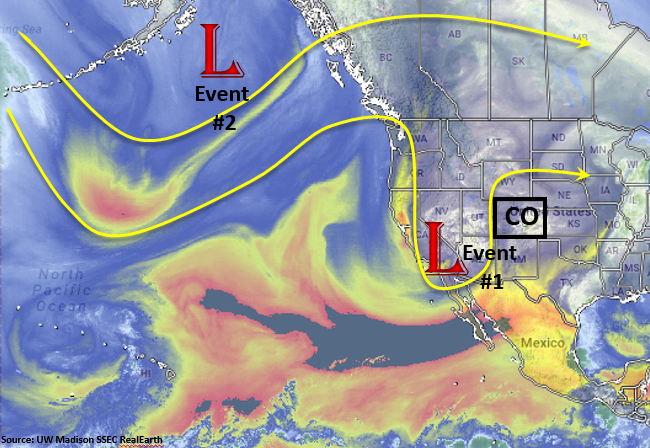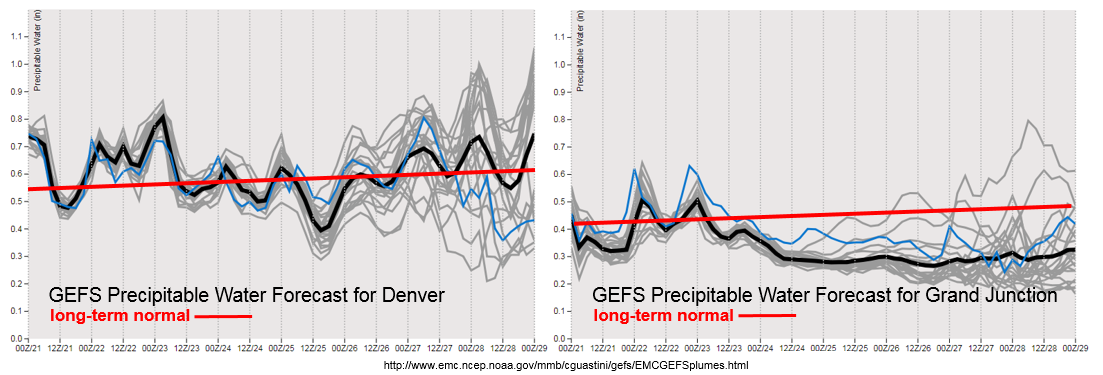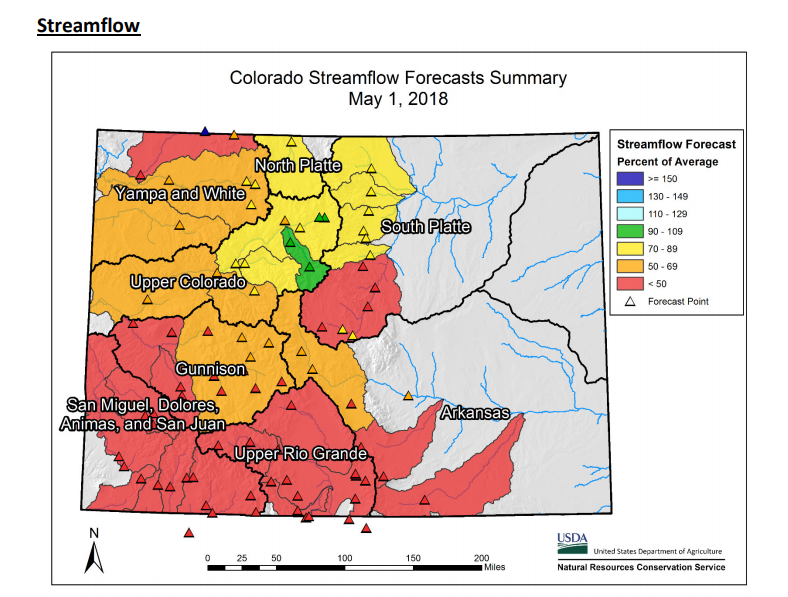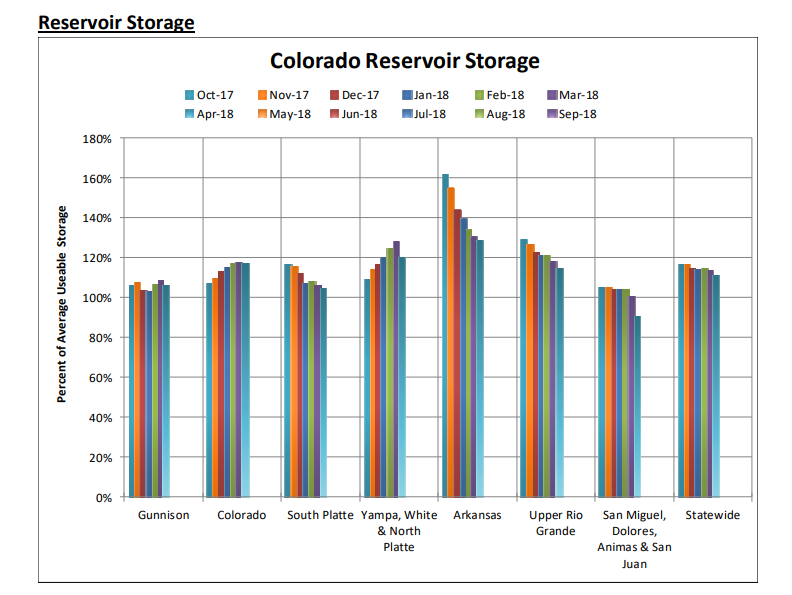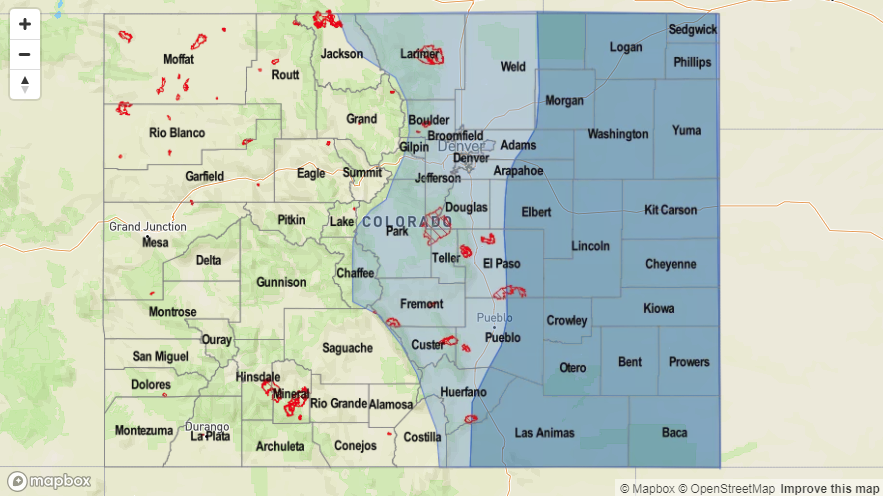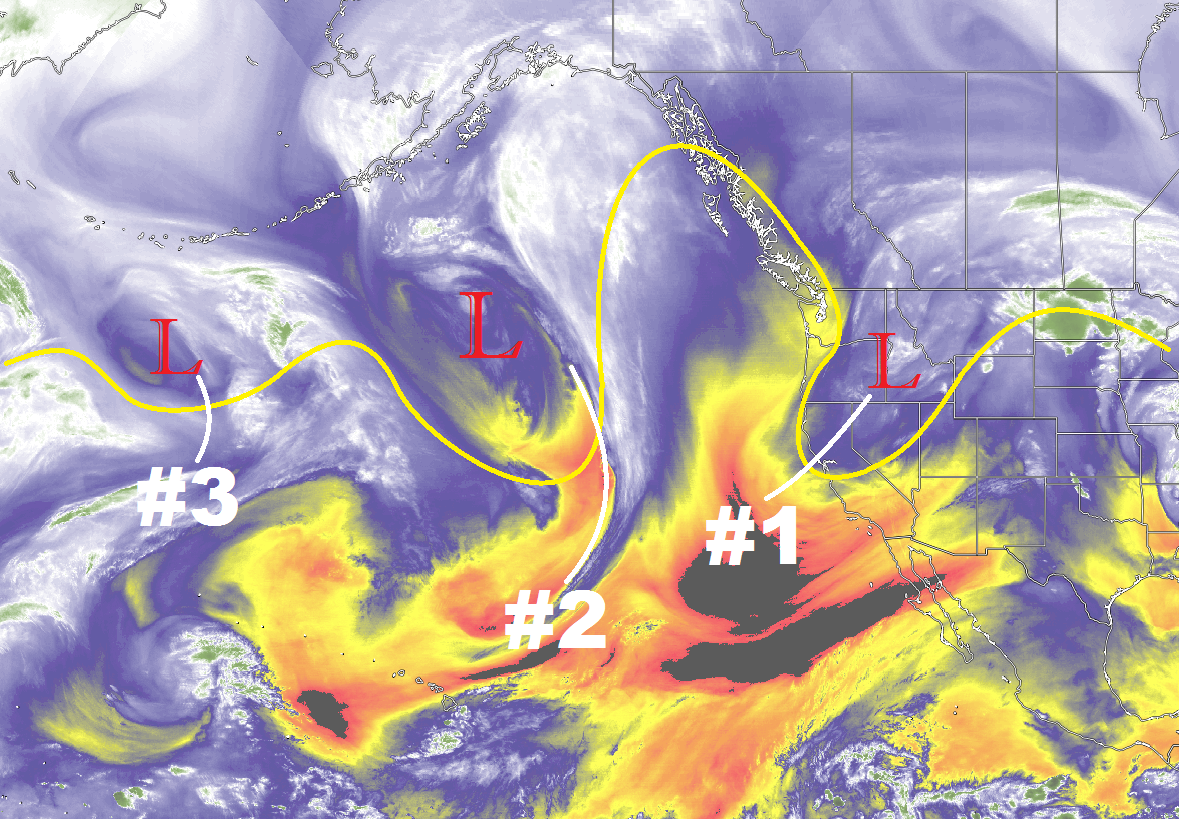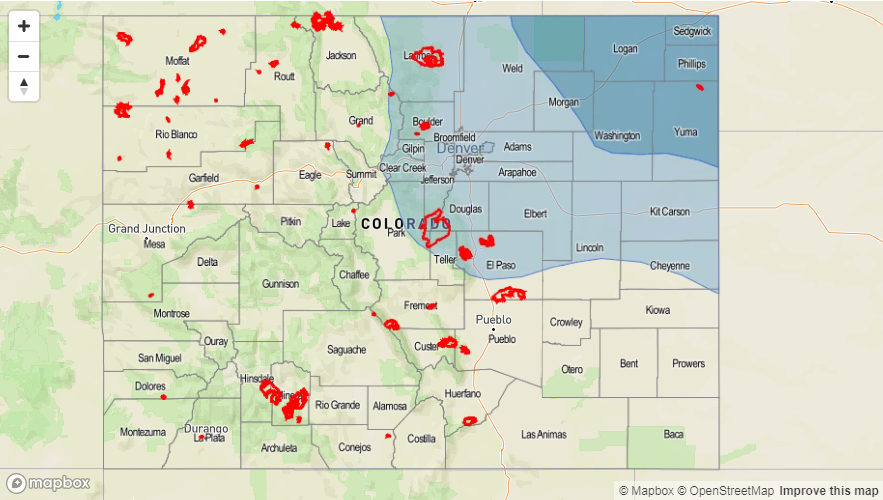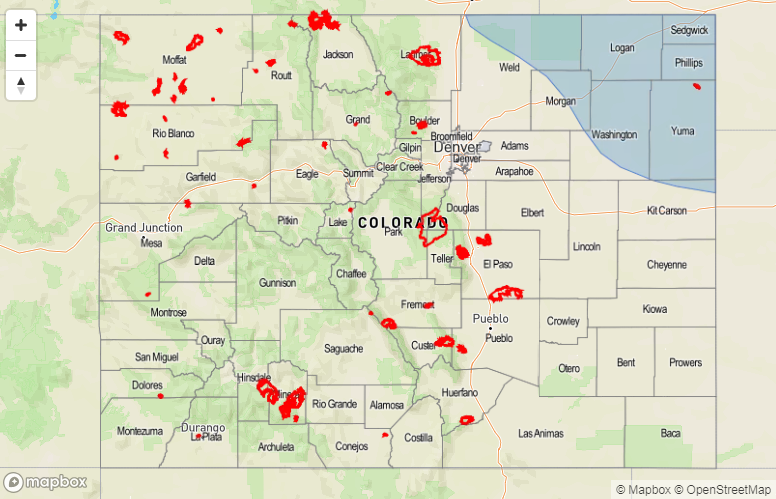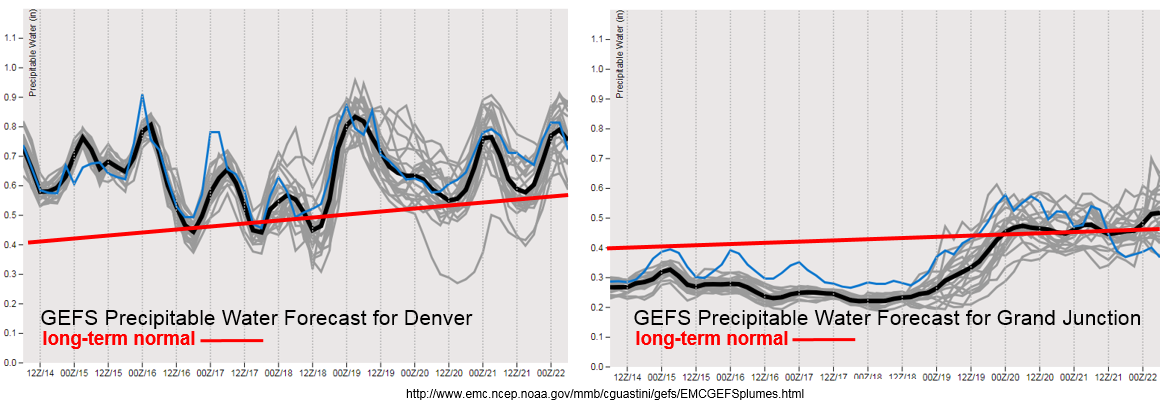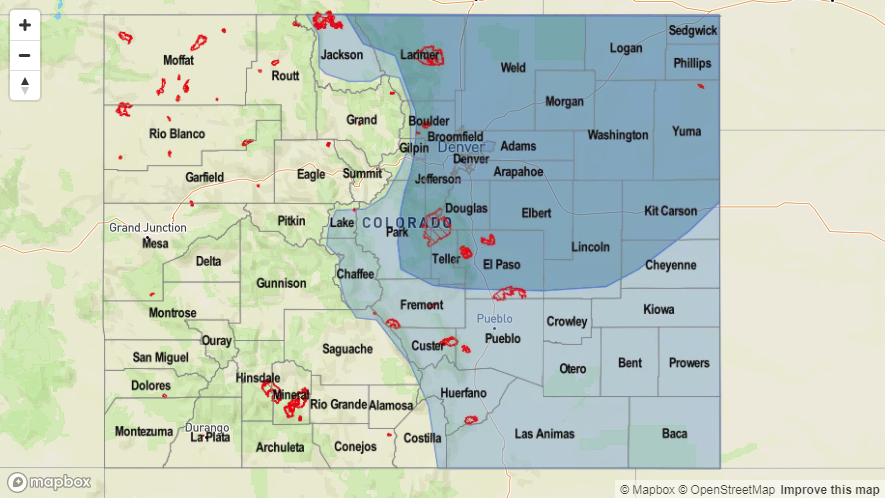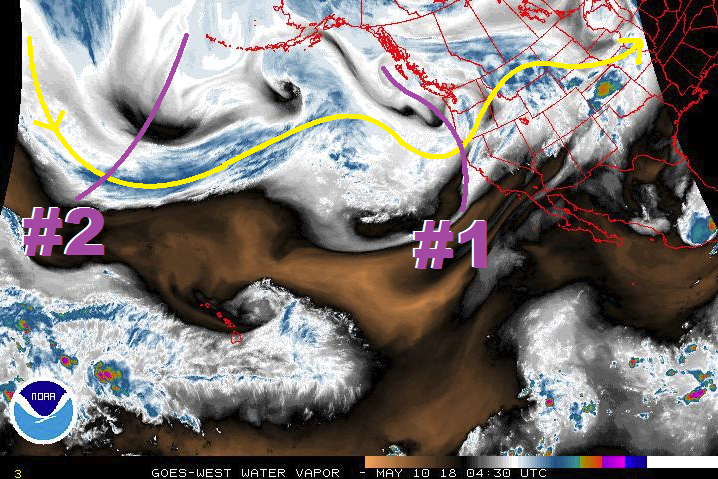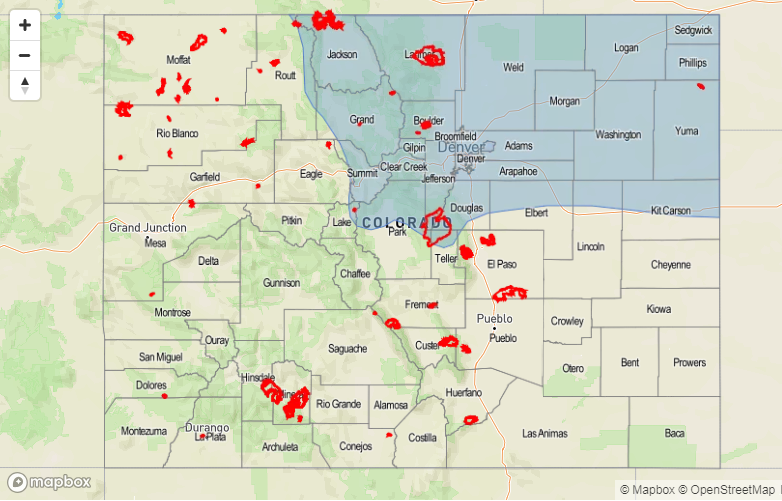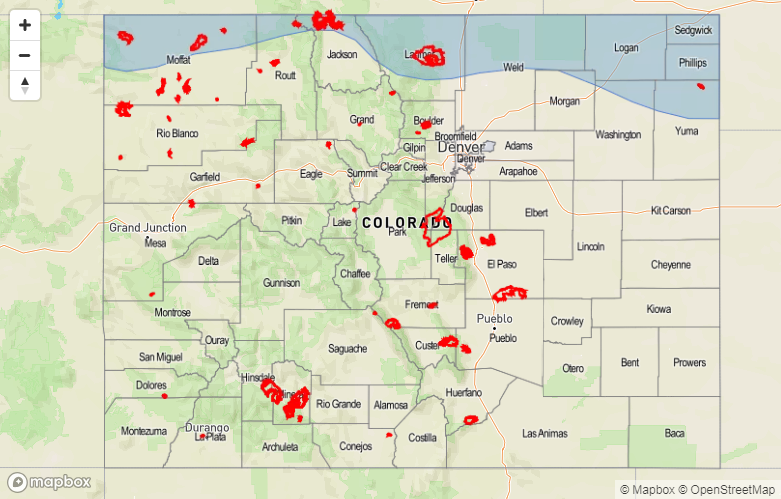Issue Date: Monday, May 21th, 2018
Issue Time: 2:40PM MDT
Valid Dates: 5/22 – 6/5
The North Pacific water vapor imagery below shows a split pattern of the polar jet stream, which will be the focus of this next FTO period. The notably strong low over the gulf of Alaska will continue to support troughing over the west coast with a on and off ridging pattern over Colorado. This continuous pattern over the past couple of weeks has brought either an active rainfall pattern or a high fire threat depending on the moisture associated with each passing trough.
Currently, the upper trough positioned over southern California has provide moisture and upper-level support for scattered thunderstorms over the higher terrains Sunday into Monday both east and west of the Continental Divide. Southerly winds from the low will continue to pull higher Precipitable Water (PW) values further northwards to continue Event #1 on Tuesday.
The GEFS PW plume forecast for Denver and Grand Junction shows this above average moisture crawling northward through Tuesday. However, after Tuesday, Denver returns to average PW and the chance for heavy rainfall is limited to the far eastern plains where better moisture remains. However, with quick storm motion, only isolated rainfall is expected. West of the Divide, PW drops very far below average through next Monday. The low moisture, associated with a building ridge, will continue to dry the ground throughout the week. Possible high winds this weekend over western Colorado may enhance fire weather conditions, so monitor weather conditions closely and use caution while burning outdoors.
Event #2 occurs at the end of this week as the low pressure over Alaska produces another open trough over the West Coast. With PW currently forecasted to be about average, there is no heavy rainfall threat at this time. However, check back to Thursday’s FTO for changes to the forecast. Below we describe the identified precipitation event in more detail.
On another note, we are nearing peak streamflow time for Colorado’s rivers. Cooler temperatures and short periods of warm temperatures has prevent excess runoff so far this season. Peak flow this year are expected to be below average due to very low snowpack (with the exception of the Northern Mountains). The Colorado Streamflow Forecast Summary for May 1 below shows much below average streamflow for Colorado. Thankfully, reservoir storage is at or above 100% of average (source: NRCS). The Yampa, Elk, Gunnison and Colorado Rivers have likely reached their peak flows for the season. The Yampa peak streamflow was measured at 2,570 cfs putting it at its lowest peak since 2012. The Elk is sitting around 1,570 cfs. Combined, the Gunnison and Colorado rivers had the third earliest peak recorded with 8,500 cfs. This puts the Gunnison and Colorado rivers at the fourth lowest peak streamflow ever recorded.
Event #1: Tuesday (5/22) – Wednesday (5/23)
No Apparent Threat as the upper disturbance over Nevada begins to breakup over the Great Basin
PW continues to increase to the north with southerly winds pulling in moisture from New Mexico. This should cause another round of scattered showers and thunderstorms for the higher terrains and western slope Tuesday. Energy released from the trough as it begins to fall apart will help provide upper support for more widespread development of thunderstorms when compared to Monday. A line of thunderstorms will likely develop over the Southeast Plains Tuesday afternoon as storms move off the higher terrain. The main threats will be gusty winds and quarter size hail. Wednesday, some more isolated storms could be possible over the eastern plains where moisture is able to remain intact. For details Wednesday, stay tuned to the daily FTB. At this time there is no apparent flood threat.
Event #2: Friday (5/25) – Sunday (5/27)
No Apparent Threat as another trough spins into place over southern California
Towards the start of next weekend, the next trough will set up west of Colorado. As mentioned above, the chances of heavy rainfall depend on the moisture content of each trough. Currently the GEFS has the ridge over eastern Colorado, which means very little moisture is expected for afternoon thunderstorms. So expecting the scattered storms to be confined to the higher terrains at this time with isolated pockets receiving up to 0.5 inches of rainfall for the weekend. There is also a chance for stronger storms and heavier rainfall over the eastern plains due to better moisture and dynamics each afternoon. However, details are a bit hard to pinpoint at this time. Please check back to Thursday’s FTO for changes to the forecast.

